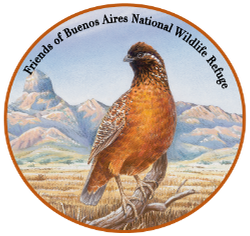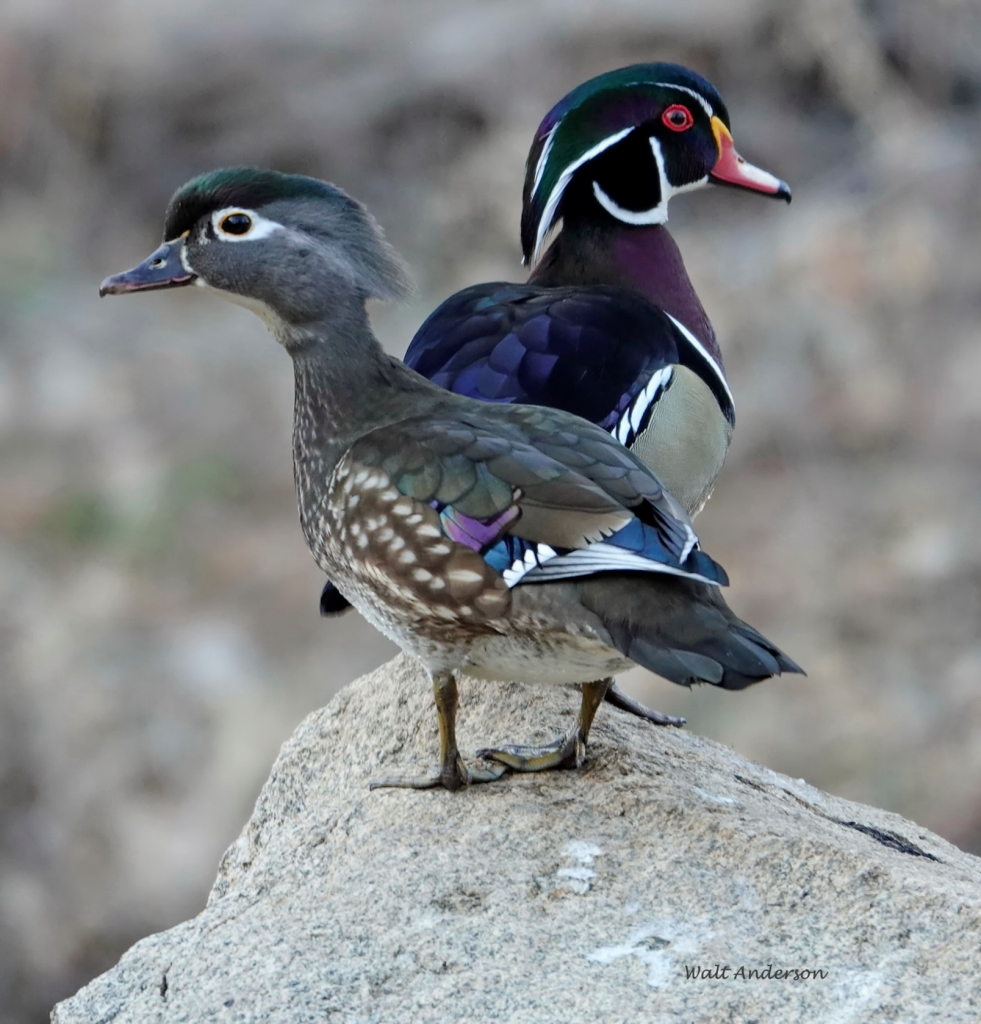
Birding with a Bonus—A Morning in the Dells
by Walt Anderson
A naturalist (or anyone who cares about nature) is an observer, a witness to the full range of life in which we are simply one player among millions. There is joy in connecting deeply with the familiar, the predictable. For example, as days lengthen in the spring, you can hear the joyful melodies of a robin, a sound absent in the depths of winter. Daffodils appear predictably, and an overwintering Mourning Cloak butterfly flutters by as they do every spring. The human world seems pretty chaotic compared to the faithful turnings of seasons and the natural phenomena that unfold.
I’ve written before about heading out without any grand expectations, open to the little things (Annie Dillard’s “pennies”) that you can always find. One morning this past week, we walked to Granite Creek in the Dells just after dawn, filling our hearts with the familiar, and returned home refreshed and inspired. I stayed outside watching an area where we put our suet and peanut butter for the birds. Standing motionless like a strange tree, I was soon surrounded by dozens of birds who accepted me as part of their environment. It was such a pleasing contrast to the usual human practice of barging through a landscape as everything wild flees for cover, and I felt immense joy.
Then something happened that rocked my peaceful world. It was one of those once-in-a-lifetime events that will be deeply imprinted in my memory for the rest of my life. In the quiet narrative of my morning, it was a bold exclamation point.
I invite you to join me for a sample of this morning’s stories, starting with the intimacy of connections with common birds and ending with an avian drama that I cannot hope to describe adequately.
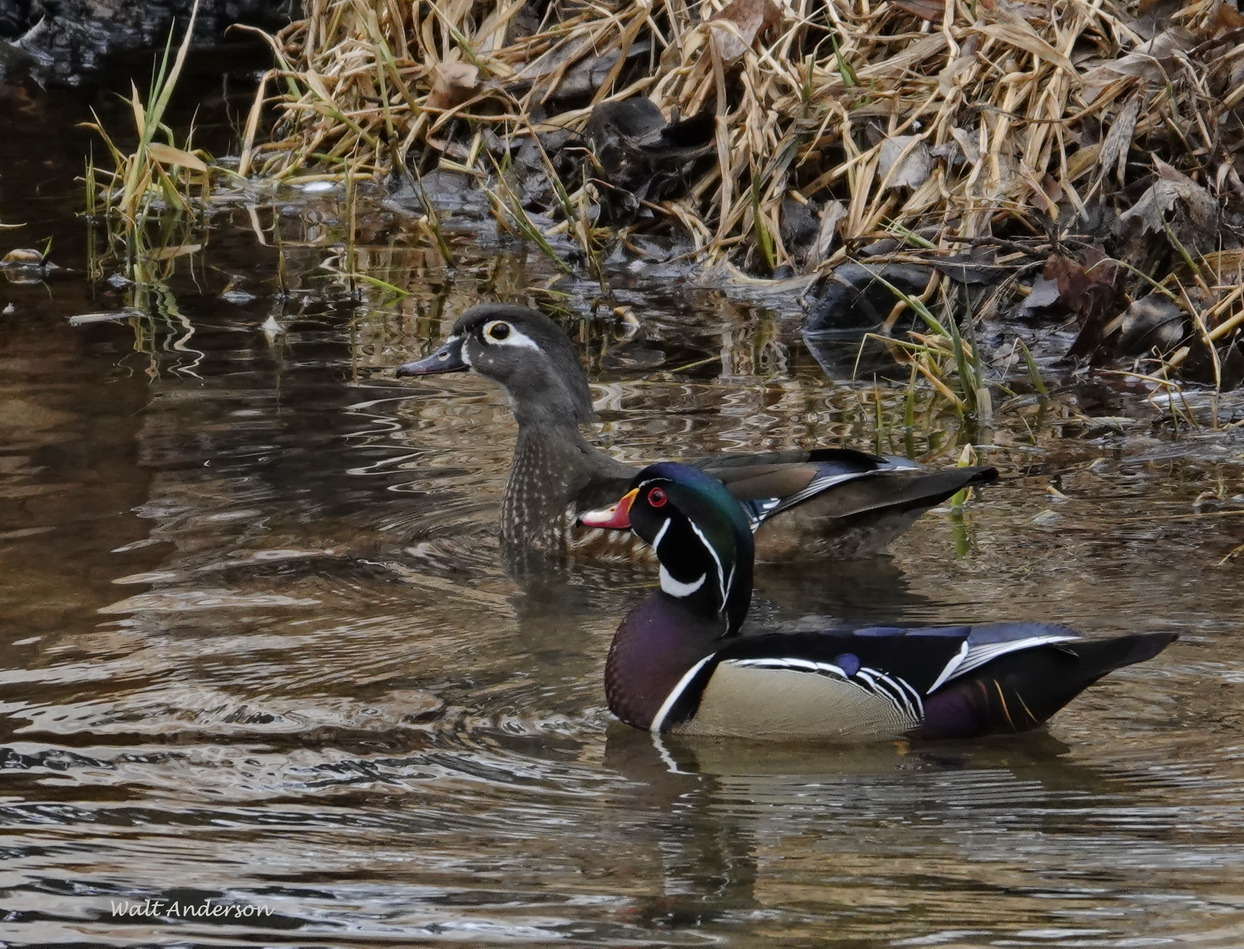
Deep in the morning shadows of Granite Creek, a pair of Wood Ducks watched us, ready to fly if we moved too quickly. Patience is rewarded, as it often is. One of the keys to success in observing wildlife is slowing down. I consider it a success in wildlife photography if I am not getting a shot of a fleeing bird or mammal. Critters live on a finite energy budget. Pushing them, especially in winter when cold weather and limited food availability place metabolic challenges on them, can make a huge difference in their reproductive success, even survival, that year. I don’t need to fill the frame with the animal if attempting to do so would cause stress. It’s often nice to show the animal in its environmental context anyway. So I took my shot and backed slowly away. It’s the neighborly thing to do.

And if you are humble and thoughtful, you may be able to fill the frame anyway without causing undue stress to your subject. What a handsome pair, and what a gift to start the day!
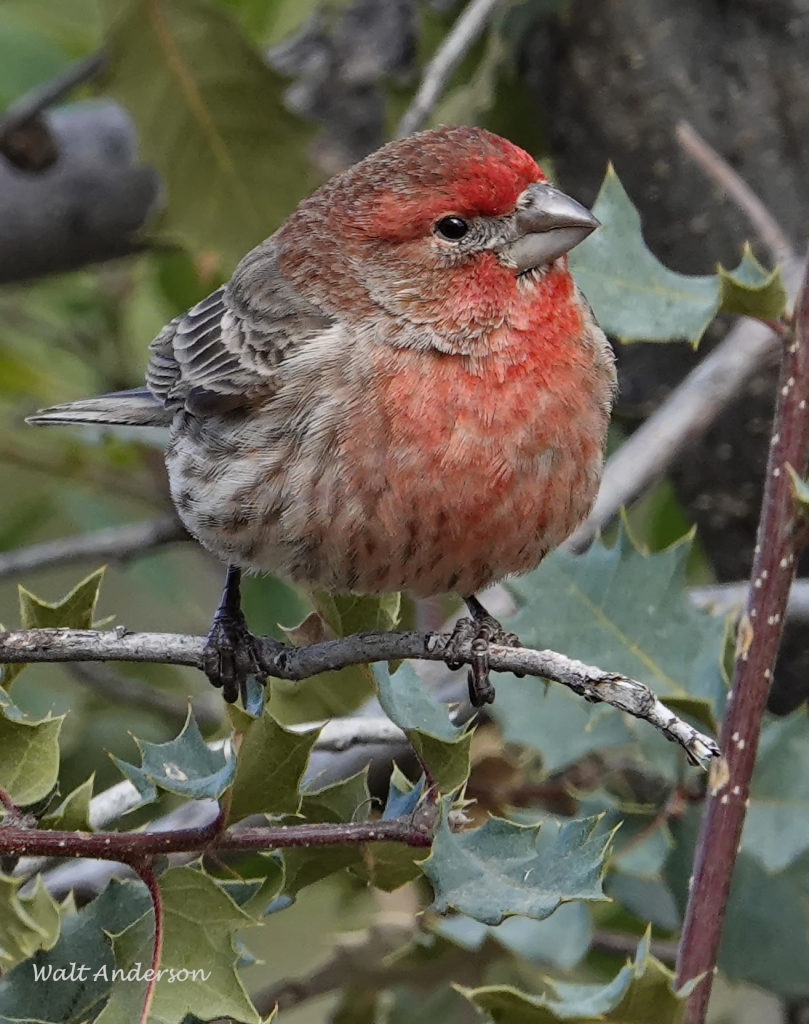
The House Finch is so familiar that it’s easy to overlook just how beautiful it is. With birds, familiarity shouldn’t breed contempt but respect. These birds are successful partly because they thrive in human environments—not the relatively sterile canyons of high rises in a city, but anywhere that we have trees, shrubs, gardens. And they fill the air with complex melodies to capture any receptive heart.
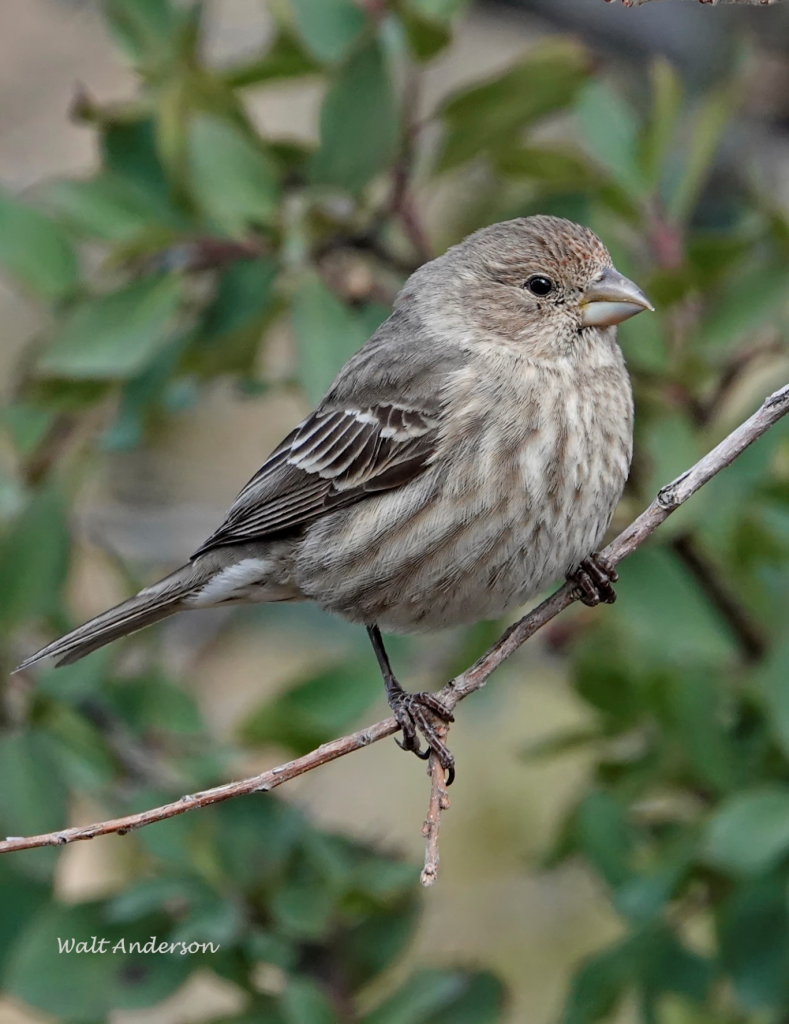
The female House Finch lacks the bright colors but is equally beautiful if you zoom in to study the subtleties of her plumage. She is also one of the tame, confiding birds that seem very comfortable in the presence of humans, especially if you are standing like a 6’4” tree crowned with gray lichens!
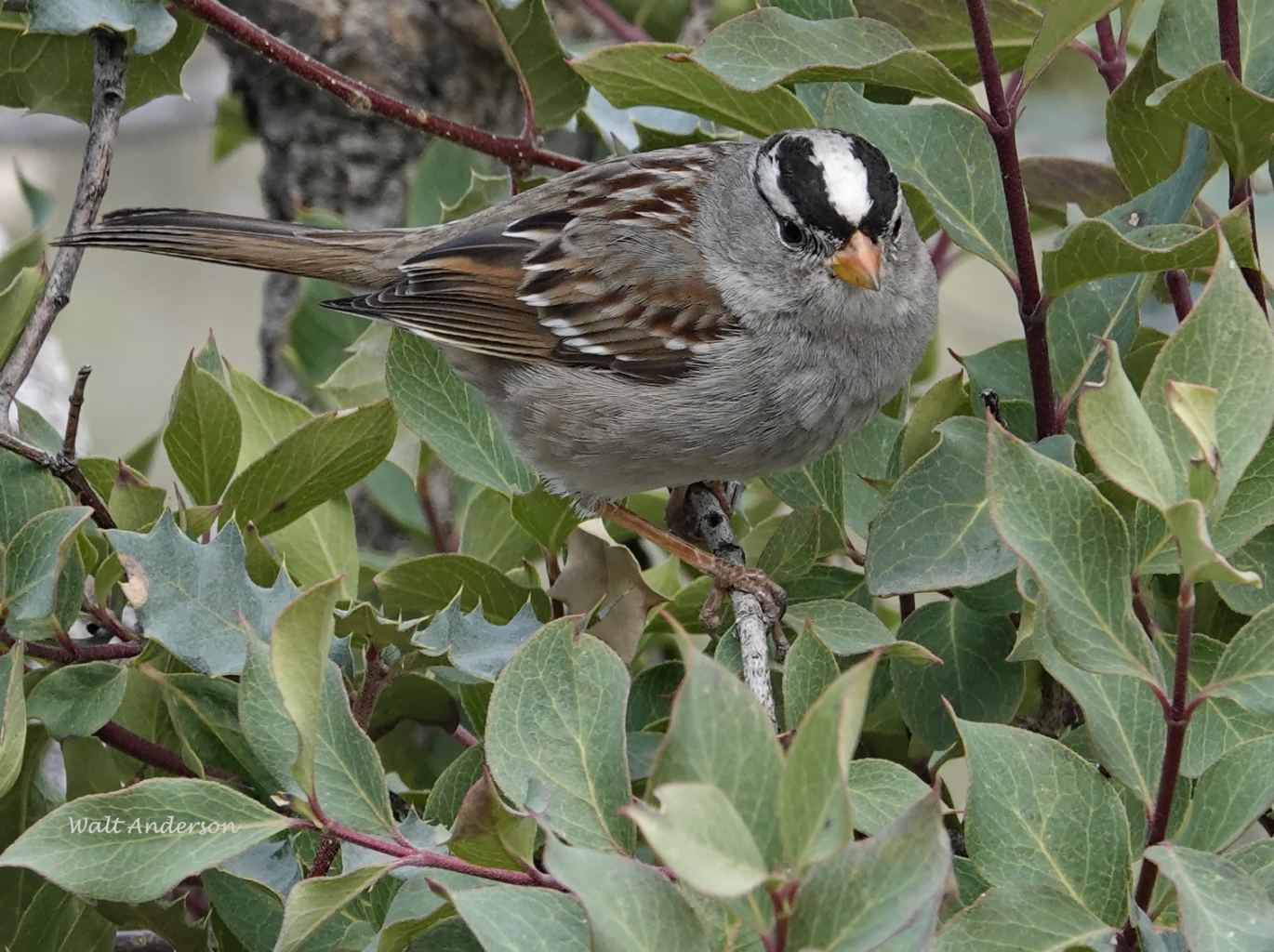
White-crowned Sparrows winter here and breed farther north, but while they are here, they practice their lovely songs and bring joy to those of us who listen to their cheery choruses.
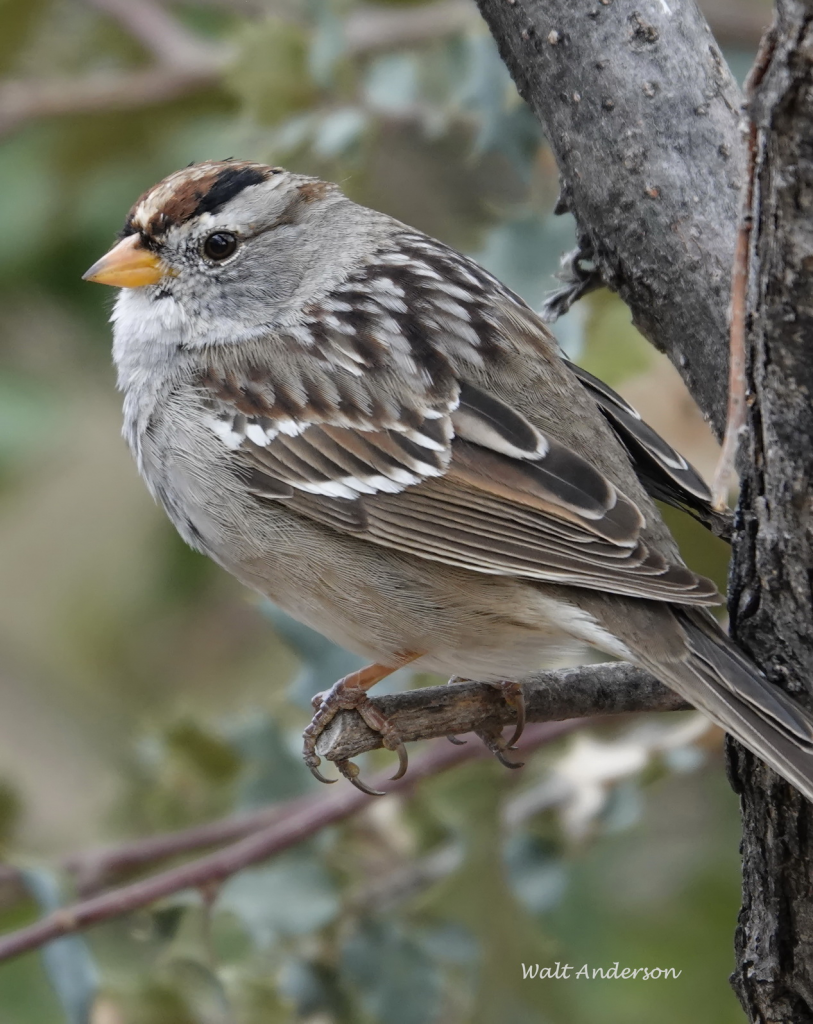
First-year White-crowns have brown head stripes, but this young bird is molting into its black feathers, another sign of spring.
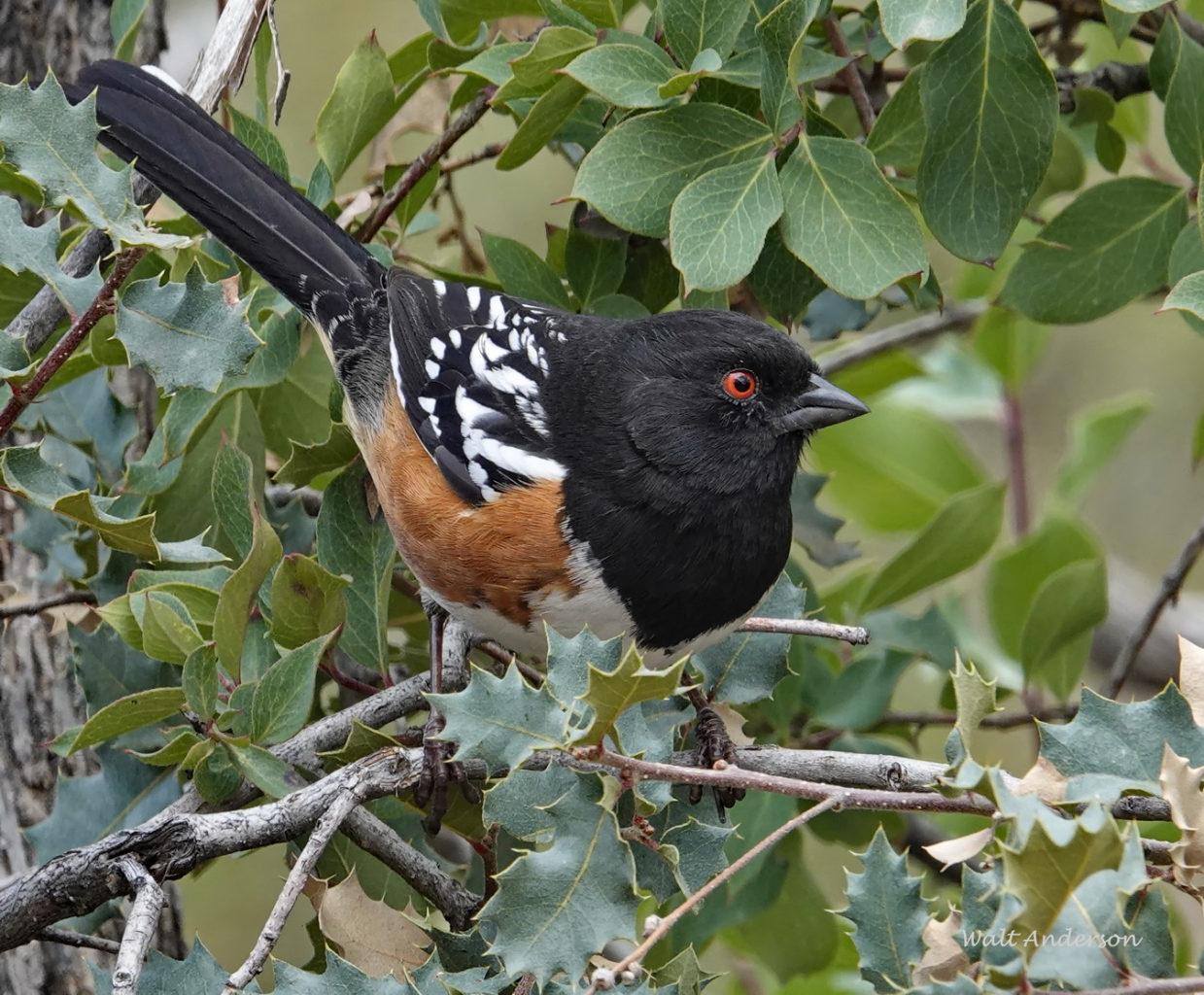
Spotted Towhees are really just plus-size sparrows. They have begun their morning songs, and they will breed here. Formerly they and their eastern counterparts that lack white spotting on the back were known as Rufous-sided Towhees, but evidence piled up that they were distinct species, so now we have Spotted and Eastern Towhees.
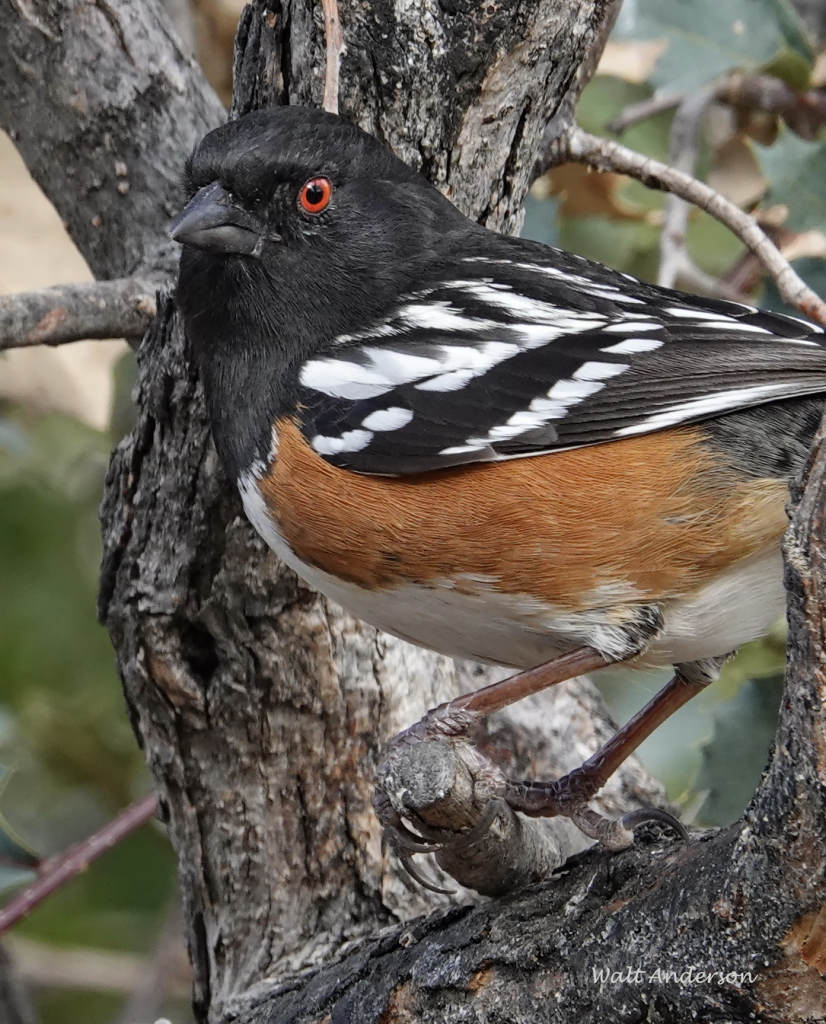
As sparrows go, they are among the most colorful, for sure!
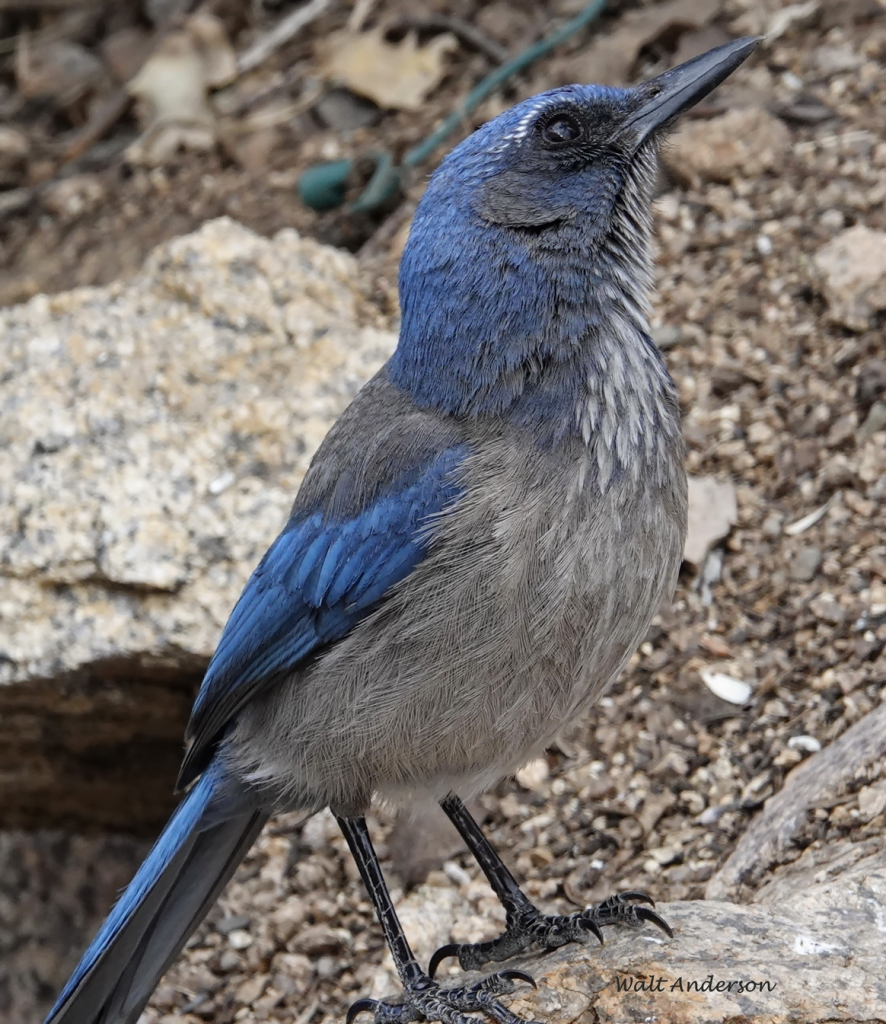
The Woodhouse’s Scrub-Jays sometimes come flying in, shouting like avian machine guns. Other birds scatter, and the jays have the suet and peanut butter to themselves for a minute until the other birds realize it was a false alarm. The deep blues are an impressive contrast to the colors of the other birds.
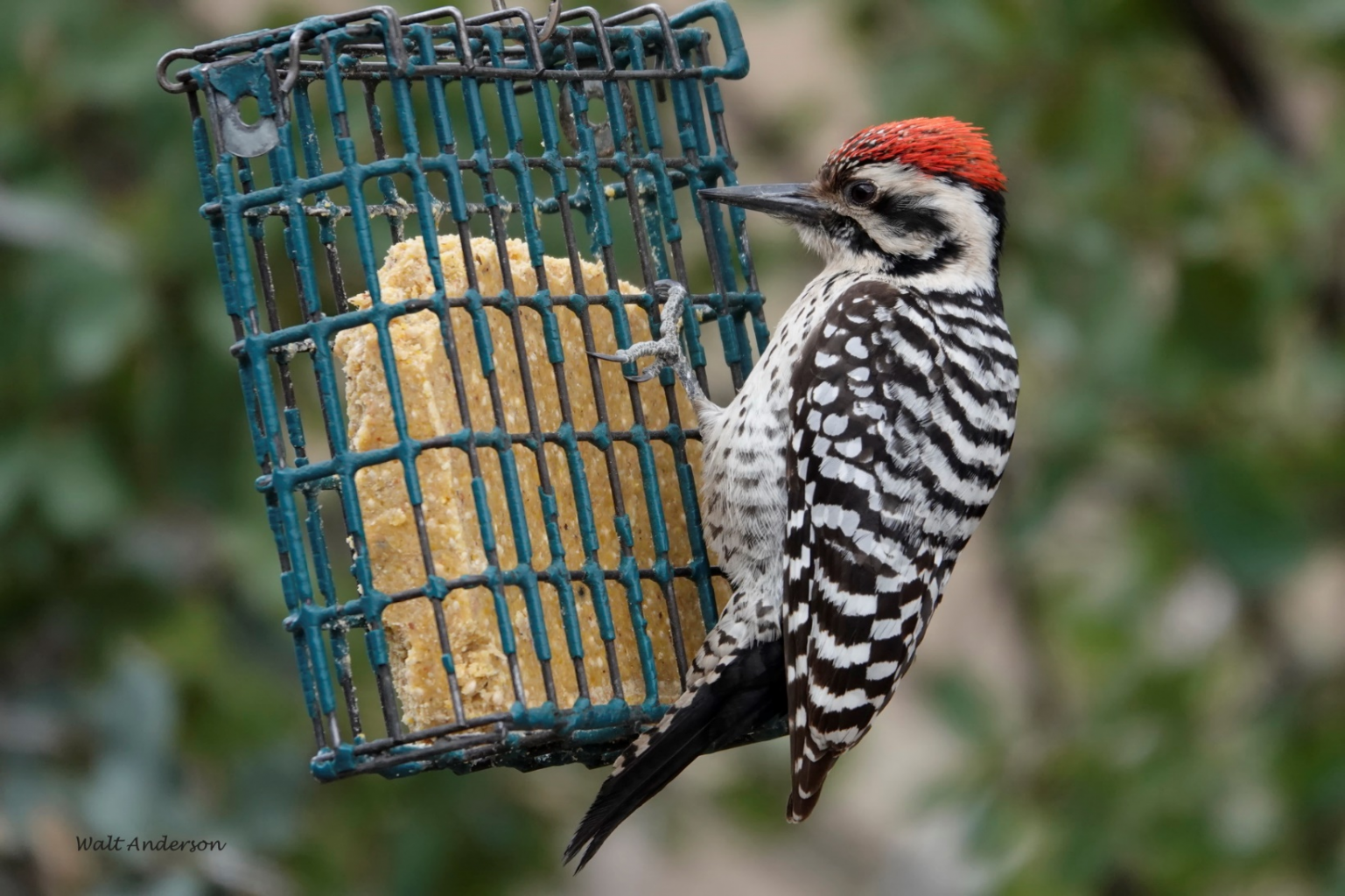
Four species of woodpeckers visit here, although this morning, flickers don’t make an appearance. Smallest of our woodpeckers, the Ladder-backed is subordinate to the others, so they have to watch for brief opportunities to move in for the yummy suet.
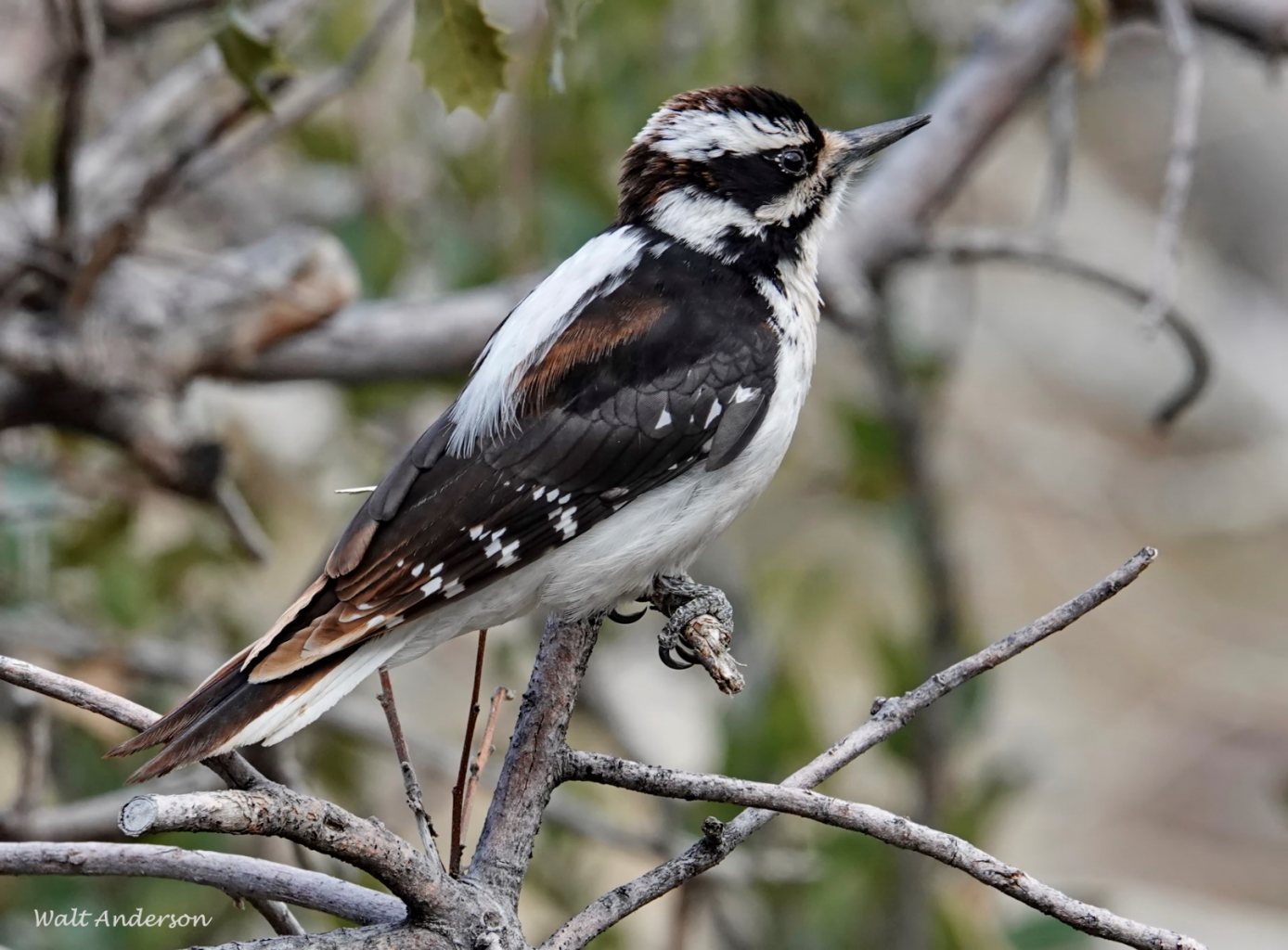
Hairy Woodpeckers are a bit photo-shy, though here I captured a decent shot of the bird I call Harriet (Harry was in a short while before). Look at that “hairy” back! We think of them as black-and-white birds, but a close look reveals some subtle bronzes, and the male has a flashy red cap.
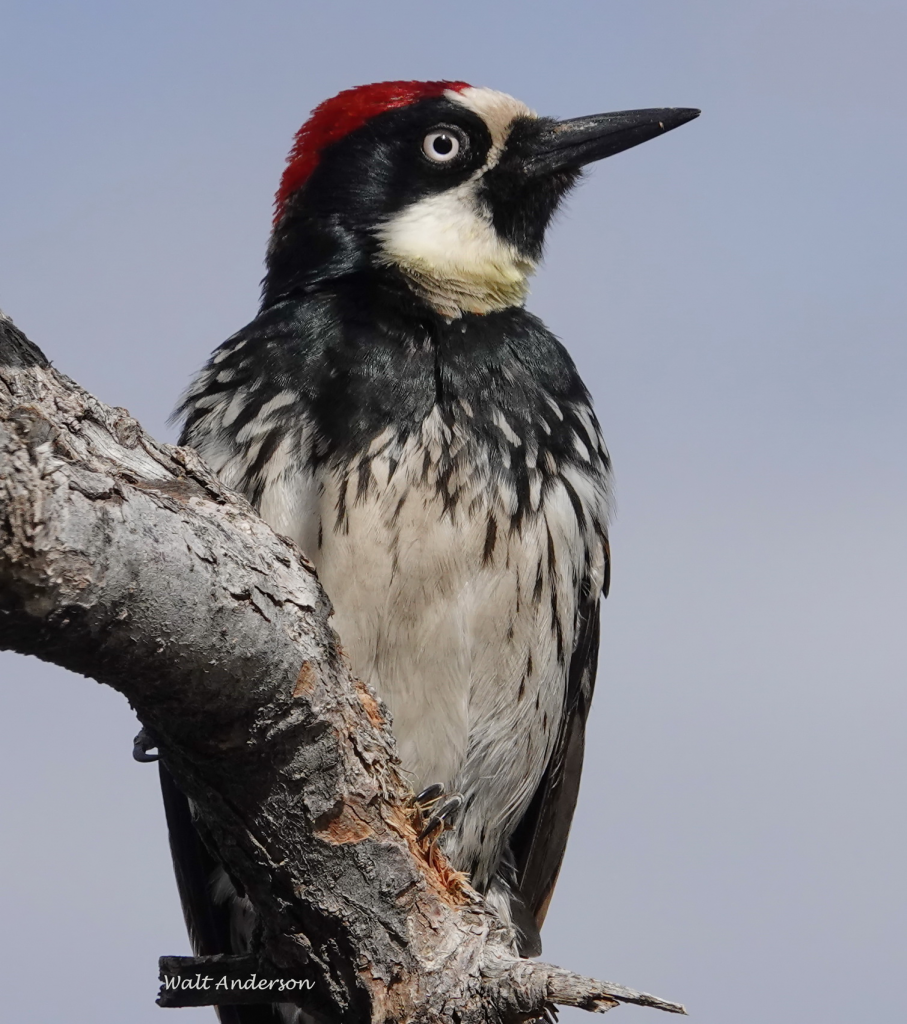
The dominant woodpeckers in our yard are the clownlike Acorns. As many as five of these social woodpeckers at a time can come in, squawking “pudocket, pudocket!”

These birds have so much character, and they are gorgeous, as well. Look at the iridescent blues on this male’s back! How can I tell the sex of this bird? The female has a black band separating the white forehead from the red crown.
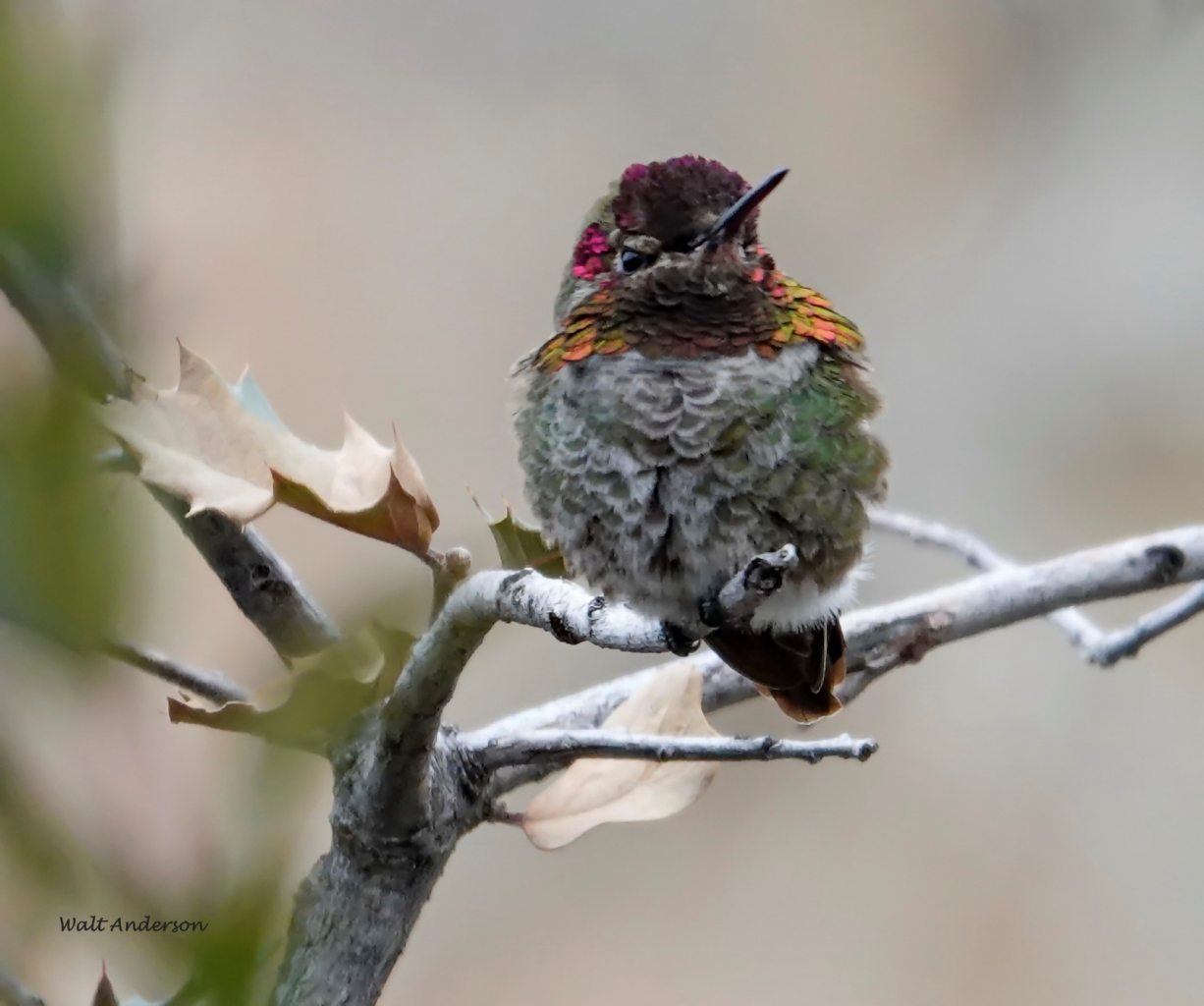
Though we have cold nights and get snow on occasion, several male Anna’s Hummingbirds spend the winter here, and they are singing now as they defend their territories and await the arrival of the females. One lady did show up last week, but I found it motionless on the ground, possibly frozen to death. Sometimes the early bird gets the advantage, but sometimes it’s a fatal mistake.
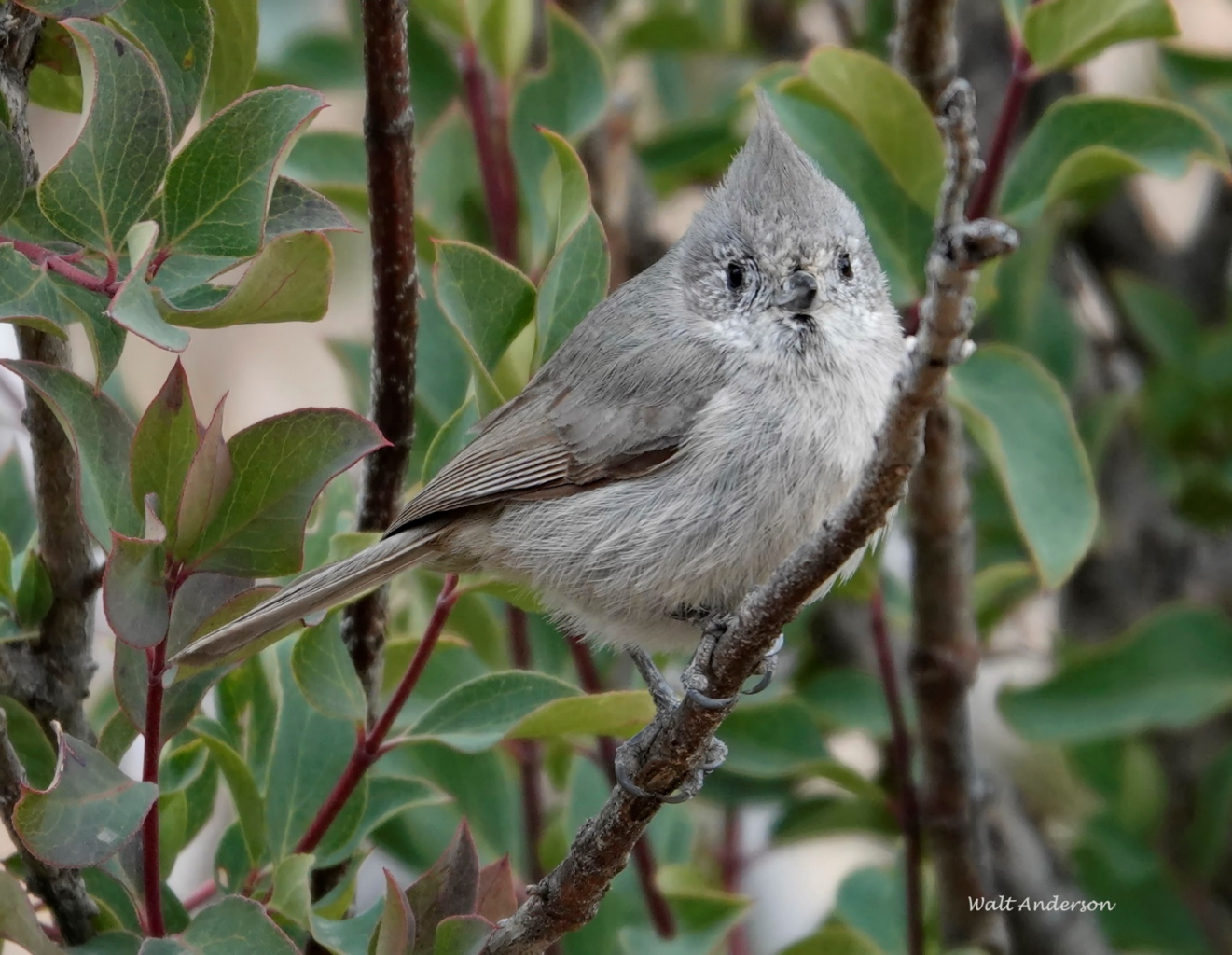
The Juniper Titmouse lacks any showy colors but more than makes up for that with its charming personality. The same goes for the drab little Bushtits, who show up in busy little flocks.

Bewick’s Wrens tend to be shy, so I was happy to capture a portrait of one that landed on our pavers.
These are just a sample of the avian neighbors who went about their lives around me as I stood motionless (and more than a little chilled) below my house. They were the familiar and predictable part of my morning. Then the surprise arrived, and all of these peaceful birds disappeared in a flash.
I heard a loud whooshing sound above me and looked up just in time to see two large birds hurtling through the sky straight toward the house. It took a second to comprehend what was happening, but then I realized that an adult Golden Eagle and a large, dark bird in its talons were about to collide with the building. The eagle, having just caught its breakfast, apparently recognized the danger and released its hold on the prey; it banked quickly and just missed the house. Whew!
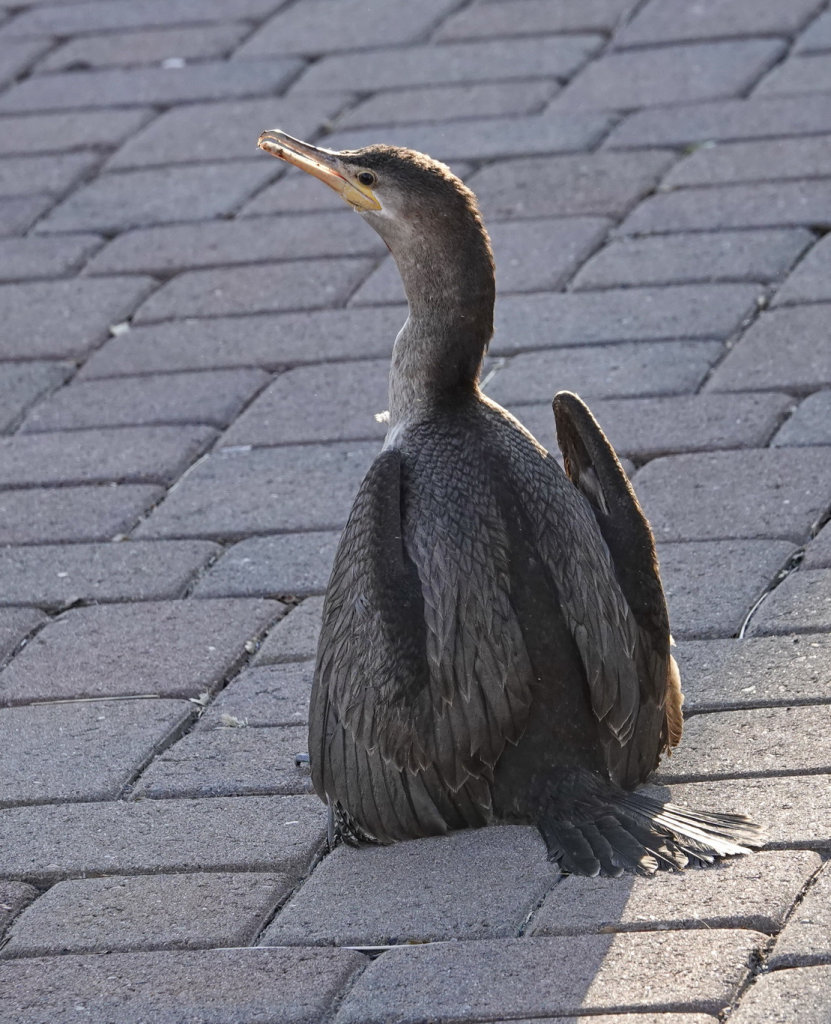
The prey was not as lucky. It crashed into the side of the house and fell to the pavers just 12 feet away from me. A Neotropic Cormorant—a bird I never expected to see in my yard! In a minute, it collapsed, bleeding seriously. We wrapped it in a blanket and took it to Willow Lake, where we set it next to the water among weeds that would obscure it from any passing people. Alas, it passed away. We decided to leave it there, hoping that an eagle or other scavenger would find and recycle it. I returned 90 minutes later, and a dark-phase Red-tailed Hawk was indeed feasting upon it. The eagle’s lost breakfast now served another raptor.
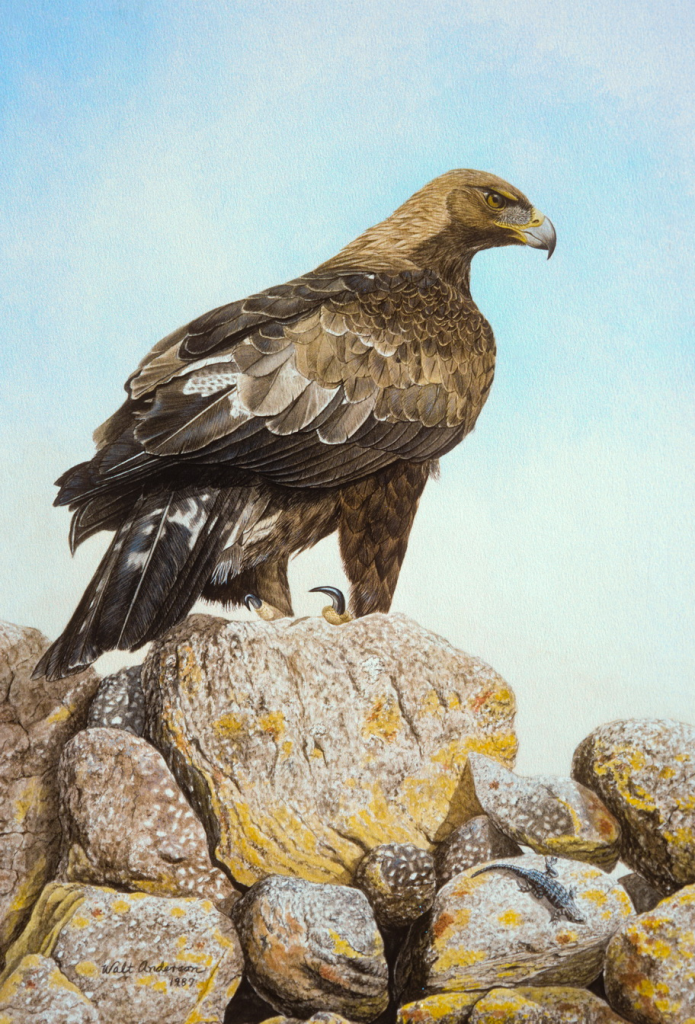
The drama above me happened so fast that I didn’t photograph the eagle, but the memory of this amazing episode is deeply etched in my mind. I have tremendous respect and admiration for the Golden Eagle, a bird that has been a totem in my life. I have helped band them in the wild and spent a day with two of them in a flight cage at the World Center for Birds of Prey in Boise, Idaho. Based on that intimate experience, I did this large watercolor painting of a Golden Eagle on a rock wall of andesite. I added the fence lizard in its appropriate habitat. Golden Eagles have nested regularly in the Granite Dells, though I hadn’t seen one there for a couple years. I do hope the eagle that surprised the cormorant (and me!) has a mate and is nesting back in the dramatic crags of this range.
It is rare to see an act of predation by a Golden Eagle. The peaceful sense of calm I had been feeling was replaced by a rush of adrenalin that comes back to me as I relive the moment. I will gladly take both ends of the emotional spectrum that Mother Nature gives me, and I am filled with gratitude.
